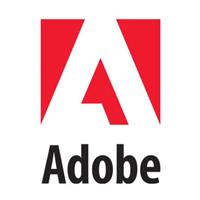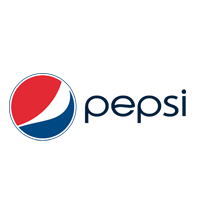Strong brands have staying power!
30% of the world's 100 most valuable brands were developed before 1900.
30% of the world's 100 most valuable brands were developed before 1900.
*Source list compiled by www.BrandingontheNet.com, Kristie Tamsevicius by researching when the top branded were founded and using an article "The Top 100 Brands of 2003" from BusinessWeek
A case for personal branding: 75% of buying decisions are based on emotion.
A case for defining a niche: 20% of your customers will deliver
80% of your revenues.
A stronger corporate brand image
will boost your stock price by an
average of 5-7 percent.
Spending MORE on personal branding during a recession
will bring a bigger return on your dollar!
A 1998 PIMS study showed that increased marketing spending during the last recession achieved an average return on capital employed of 4.3%, compared to 0.6% for those that maintained marketing spending, and -0.8% for those that cut spending.
Did you know that a P.S. is 10 times more likely to be read than any other text in your sales letter?
Direct mail can increase results by 300-500%?
Did you know that testimonials can
increase sales by 250% or more?
Did you know that we are exposed to over 3,000 marketing messages a day?
60% of consumers feel more negatively about advertisingA case for personal branding: 75% of buying decisions are based on emotion.
A case for defining a niche: 20% of your customers will deliver
80% of your revenues.
A stronger corporate brand image
will boost your stock price by an
average of 5-7 percent.
Spending MORE on personal branding during a recession
will bring a bigger return on your dollar!
A 1998 PIMS study showed that increased marketing spending during the last recession achieved an average return on capital employed of 4.3%, compared to 0.6% for those that maintained marketing spending, and -0.8% for those that cut spending.
Did you know that a P.S. is 10 times more likely to be read than any other text in your sales letter?
Direct mail can increase results by 300-500%?
Did you know that testimonials can
increase sales by 250% or more?
Did you know that we are exposed to over 3,000 marketing messages a day?
than they did a few years ago.
65% already feel overwhelmed with too many marketing messages.
61% feel the volume of advertising is out of control.
source: http://www.brandingonthenet.com/personal-branding-facts.htm
1. Apple – The inspiration: | ||
| ||
2. Adobe – The River: | ||
| ||
3. CISCO – The confused acronym: | ||
| ||
4. Google – The Back Rub: | ||
| ||
5. Hewlett Packard – The coin toss: | ||
| ||
6. Mercedes – The fair lady: | ||
| ||
7. Pepsi Cola – The wine | ||
| ||
8. Intel – The hard to get trademark: | ||
| ||
9. Sony – The slang terminology: | ||
| ||
10. Yahoo! | ||
| ||
| source: http://www.graphicdesignblog.org/facts-about-famous-brands/ |
This was actually the financier’s daughter’s name.
Adobe
This came from name of the river Adobe Creek that ran behind the house of founder John Warnock.
Apple Computers
It was the favorite fruit of founder Steve Jobs. He was three months late in filing a name for the business, and he threatened to call his company Apple
Computers if the other colleagues didn’t suggest a better name by 5 O’clock.
CISCO
It is not an acronym as popularly believed. It is short for San Francisco.
Compaq
This name was formed by using COMp, for computer, and PAQ to denote a small integral object.
Corel
The name was derived from the founder’s name Dr.Michael Cowpland. It stands for COwpland Research Laboratory.
The name started as a joke boast! ing about the amount of information the search-engine would be able to search. It was originally named ‘Googol’, a word for the number represented by 1 followed by 100 zeros. After founders Stanford graduate students Sergey Brin and Larry Page presented their project to an angel investor, they received a cheque made out to ‘Google’
Hotmail
Founder Jack Smith got the idea of accessing e-mail via the web from a computer anywhere in the world. When Sabeer Bhatia came up with the business plan for the mail service, he tried all kinds of names ending in ‘mail’ and finally settled for hotmail as it included! The letters “html” – the programming language used to write web pages. It was initially referred to as HoTMaiL with selective uppercasing.
Hewlett Packard
Bill Hewlett and Dave Packard tossed a coin to decide whether the company they founded would be called Hewlett-Packard or Packard-Hewlett.
Intel
Bob Noyce and! Gordon Moore wanted to name their new company ‘Moore Noyce’ but that was already trademarked by a hotel chain so they had to settle for an acronym of INTegrated ELectronics.
Lotus (Notes)
Mitch Kapor got the name for his company from ‘The Lotus Position’ or ‘Padmasana’. Kapor used to be a teacher of Transcendental Meditation of Maharishi Mahesh Yogi.
Microsoft
Coined by Bill Gates to represent the company that was devoted to MICROcomputer SOFTware. Originally christened Micro-Soft! , the ‘-’ was removed later on.
Motorola
Founder Paul Galvin came up with this name when his company started manufacturing radios for cars. The popular radio company at the time was called Victrola.
ORACLE
Larry Ellison and Bob Oats were working on a consulting project for the CIA (Central Intelligence Agency). The code name for the project was called Oracle (the CIA saw! this as the system to give answers to all questions or something such). The project was designed to help use the newly written SQL code by IBM. The project eventually was terminated but Larry and Bob decided to finish what they started and bring it to the world. They kept the name Oracle and created the RDBMS engine. Later they kept the same name for the company.
Sony
It originated from the Latin word ‘sonus’ meaning sound, and ‘sonny’ a slang used! by Americans to refer to a bright youngster.
SUN
Founded by 4 Stanford University buddies, SUN is the acronym for Stanford University Network. Andreas Bechtolsheim built a microcomputer; Vinod Khosla recruited him and Scott McNealy to manufacture computers based on it, and Bill Joy to develop a UNIX-based OS for the computer!
Yahoo!
The word was invented by Jonathan S wift and used in his book ‘Gulliver’s Travels’. It represents a person who is repulsive in appearance and action and is barely human. Yahoo! Founders Jerry Yang and David Filo selected the name because they considered themselves yahoos.
source:http://shrey27.wordpress.com/2006/02/25/4/
1. Products are made and owned by companies. Brands, on the other hand, are made and owned by people … by the public …by consumers.
2. A brand image belongs not to a brand – but to those who have knowledge of that brand.
3. The image of a brand is a subjective thing. No two people, however similar, hold precisely the same view of the same brand.
4. That highest of all ambitions for many CEOs, a global brand, is therefore a contradiction in terms and an impossibility.
5. People come to conclusions about brands as a result of an uncountable number of
different stimuli: many of which are way outside the control or even influence of the product’s owner.
6. Brands – unlike products – are living, organic entities: they change, however imperceptibly,
every single day.
7. Much of what influences the value of a brand lies in the hands of its competitors.
8. The only way to begin to understand the nature of brands is to strive to acquire a facility which only the greatest of novelists possess and which is so rare that it has no name.
9. The study of brands – in itself a relatively recent discipline – has generated a level of
jargon that not only prompts deserved derision amongst financial directors but also provides
some of the most entertaining submissions in Pseuds’ Corner.
10. It is universally accepted that brands are a company’s most valuable asset; yet there is
no universally accepted method of measuring that value.
11. The only time you can be sure of the value of your brand is just after you’ve sold it.
12. It is becoming more and more apparent that, far from brands being hierarchically inferior to companies, only if companies are managed as brands can they hope to be successful.
13. And as if all this were not enough, in one of the most important works about brands published this year, the author says this: “Above all, I found I had to accept that effective brand communication …involves processes which are uncontrolled, disordered, abstract, intuitive … and frequently impossible to explain other than with the benefit of hindsight”.
by Jeremy Bullmore, WPP, 2001
source: http://claudiuflorea.blogspot.com/2008/02/13-deeply-disturbing-brand-facts.html











No comments:
Post a Comment